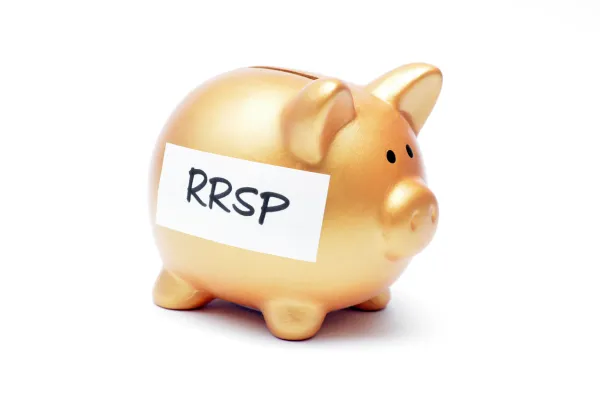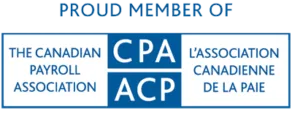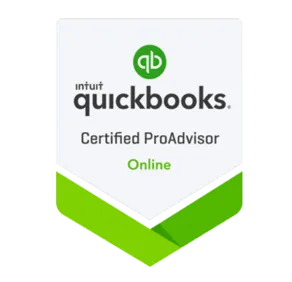OUR BLOG
Your hub for insightful and actionable content to help you unlock the potential of your business.

The Dos and Don’ts of RRSPs
How does an RRSP work?
The biggest discussion around RRSPs is always in the first two months of a new year. So, we thought we’d join in on the conversation. Many people who do not contribute to a regular RRSP contribution plan find themselves scrambling to buy RRSPs to take advantage of tax incentives and build up their retirement funds before the contribution deadline (this year, March 1, is the deadline).
When you contribute money to a RRSP, your funds are “tax-advantaged,” meaning they’re exempt from taxation the year you contribute (or by the contribution deadline). Any interest earned from investments in the RRSP can then grow tax-deferred. You do not have to pay taxes if the money remains within the RRSP. Once it is withdrawn, you will have to pay applicable taxes.
To help you meet the deadline and maximize your retirement fund, we put together a short list of dos and don’ts regarding RRSPs.
DO: Maximize your tax savings with maximum contributions
We all have ups and downs with our income. In the years you cannot use your full allowable contribution limit, keep in mind you have been building up RRSP contribution room for those good years right around the corner.
If you don’t have enough cash to contribute the maximum but know you will need the tax advantage it brings, there are a couple of ways to consider increasing your contribution. Please keep in mind this has to make financial sense for you. We recommend seeking professional guidance when it comes to these types of decisions:
Moving Investments
If you have investments such as mutual funds (non-registered), you could contribute them to your RRSP. Your tax receipt will be equal to the investment’s market value at the time of the transfer. Another option is withdrawing from your tax-free savings account.
Please note there may be implications with your capital gain amounts when moving your investments to RRSPs.
Borrowing
Yes, there is such a thing as RRSP loans. Rates for these loans are usually competitive, and although you’ll pay interest on the amounts borrowed, the long-term benefits may outweigh interest costs (please seek the advice of a professional if you are not sure). It is probably that your contribution could create a tax refund which you could use to pay down the loan.
DO: Start early
As they say, “The early bird gets the worm”. Don’t say should of, could of, would of to yourself years down the road. The sooner you put your money in, the sooner it starts to work for you. If you wish you had known more about RRSPs when you were young…sorry, we have no time machine for you. However, we encourage you to educate the young people around you to give them the knowledge you wish you had. Even if you are starting late, pat yourself on the back for starting.
In a perfect world, each year, you would be able to make your maximum contribution in January. Outside of the ideal world, a monthly contribution program also makes a powerful impact for the future you. Just start!
DO: Take advantage of all deductions available
Deferring is an option many do not use to their advantage. For example, if you expect to make more money in a couple of years, you can defer taking the tax deduction this year. Make the RRSP contribution now and claim the deduction when you’re in a higher tax bracket. You’ll still benefit from the tax deferral for any interest from your RRSP.
Two other RRSP programs that allow you to invest more than your allowable contribution.
Retiring allowance
If you leave long-term employment and receive severance or a retiring allowance, this will apply to you. With this allowance you can transfer (tax-free) into your RRSP;
An amount equal to $2,000 for each year of service before 1996,
An additional $1,500 for each year before 1989 in which you did not earn a pension (vested) benefit.
Pension Adjustment Reversal
Suppose you have left a company pension plan or deferred profit-sharing plan. In that case, you will receive a “Pension Adjustment Reversal” (PAR) if the total value of your past Pension Adjustments exceeds the benefit you received from the plan. The PAR restores the lost RRSP contribution room.
If you have changed employers in the past year, professional advice can pay off when it comes to taking advantage of this reversal.
DO: Use spousal RRSPs
A spousal RRSP is an RRSP where contributions are made and deducted by the non-benefiting spouse. Spousal RRSPs are a good way of balancing retirement income between both spouses regardless of income.
It’s also beneficial if there is an age gap between spouses. The older can continue to make RRSP contributions to the spousal plan until the end of the year the younger spouse turns age 71 (if they are still working and they qualify for contribution room).
DO NOT: Fear some risk
The markets are constantly up and down, making it a scary place to put our retirement savings. Do not limit yourself to fixed-income investments like GICs. GIC and other fixed-income securities, inflation becomes an issue and can erode your investment. A balanced investment portfolio can protect you against inflation and provide promising long-term growth potential.
Risk needs to be balanced based on your specific situation. We encourage you to work with a sound investment advisor when determining the level of risk you should take with your investment.
DO NOT: Give the Government an interest-free loan
Many people get excited when they learn they are getting a large tax refund each year. But these large tax refunds are not free money as many like to think. If you’re receiving a significant annual tax refund, you essentially provide the government with an interest-free loan.
It’s possible to reduce your taxes on every pay cheque instead of waiting until your return is filed to get a refund. To apply, you complete CRA’s T1213 “Request to Reduce Tax Deductions at Source”. On this form, you indicate the various deductions or credits that, if not considered, would otherwise result in a tax refund for the year.
The completed form is sent to the CRA tax services office for approval. Once approved, the CRA will send you a letter of authority, which must be given to your employer, who can reduce tax at source. Doing this could be putting more money in your pocket for immediate use.
DO NOT: Dip in early
You can access your RRSP before retirement. However, consider the consequences before you do. Withdrawals are taxed at your current marginal rate and are subject to withholding tax (usually 10% to 30%) at the time of withdrawal. Also, you lose the contribution room, eroding your RRSP potential.
Special circumstances will allow you to access your RRSPs without these consequences. The plans below will enable you to make tax-free withdrawals and allow you to re-contribute. You still lose the growth on your investments, but these programs may allow you to enhance your life.
The Home Buyers’ Plan
If you’re a first-time buyer or haven’t owned a property within the last four years, this plan allows you to withdraw up to $35,000 from your RRSP to help purchase a home. You won’t be taxed on the money you withdraw (if paid back on time), and if you have a partner, you could withdraw up to $70,000.
The Lifelong Learning Plan
Many people know about the Home Buyers’ Plan, but not everyone is aware of the Lifelong Learning Plan. This plan allows you to access your RRSPs to go back to school. Yes, you could also get a personal loan or a line of credit. But you would have to repay these amounts with interest. This is not the case for funds withdrawn from an RRSP for this program because the plan involves lending money to yourself.
You do have to repay these amounts to your RRSP within ten years after withdrawal. Unrepaid amounts count as taxable income. But, if your new degree enables you to get a job with a higher salary, the investment could pay off.
DO NOT: Forget your RRSPs in your estate planning
Don’t allow your RRSPs to attract probate fees (probate fees and applications differ in Québec). In most provinces, you can designate a beneficiary on your RRSP so that the assets immediately become their property upon your death. If the beneficiary is your spouse or a disabled dependent child or grandchild, the tax-deferred status of your registered assets can remain.
There may be instances where naming your estate as the beneficiary of your RRSP can grant executors the authority to make tax-deferred rollovers. Incorporating your RRSP into your estate plan can be a complicated process. Please consult a professional for guidance.
When do I stop investing in RRSPs?
If you are wondering when all of this buying RRSPs will be over, well, December 31 of the year you turn 71 is the last day you can contribute to your own RRSP. But don’t worry, if you love saving for retirement for you and your loved ones, you can continue to buy RRSPs for others 😊
RRSPs, taxes and estate planning are complex topics, and we are here to help you along the way. If we are not the right professional to advise you on any topic, we know someone who is.






